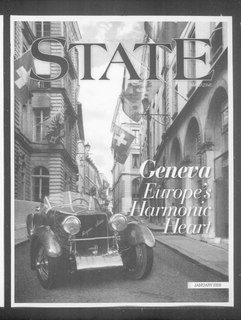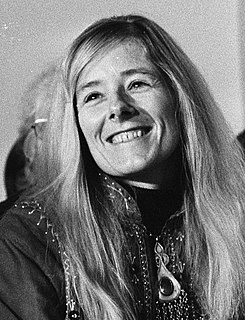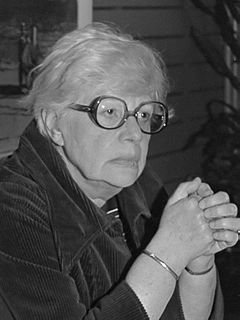Related Research Articles

A magazine is a periodical publication which is printed in gloss-coated and matte paper. Magazines are generally published on a regular schedule and contain a variety of content. They are generally financed by advertising, by a purchase price, by prepaid subscriptions, or by a combination of the three.

Grazia is a weekly women's magazine that originated in Italy with international editions printed in Albania, Argentina, Australia, Bahrain, Bulgaria, China, Croatia, Colombia, France, Germany. Greece, Indonesia, India, Jordan, Macedonia, Mexico, the Netherlands, Poland, Portugal, Pakistan, Serbia, Slovenia, South Korea, Spain, Thailand, and the United Kingdom.

Elsevier Weekblad, still known as Elsevier, is a Dutch weekly news magazine. With a circulation of over 68,000 copies as of 2018, it is the Netherlands' most popular news magazine. Its chief editor is Arendo Joustra.
Johannes (Jan) Maria van der Lans was a Dutch professor in the psychology of religion at the Catholic University of Nijmegen.
Uitgeverij Averbode is a Belgian publisher of books, comics, and magazines. The company is located in Averbode and is part of the Averbode Abbey. It has changed its name a few times since its foundation in 1877.
Mass media in the Netherlands – television, radio, newspapers, magazines – are characterised by a tradition of politico-denominational segregation ("pillarisation") on the one hand and an increasing degree of commercialism on the other.

Billboard is an American music and entertainment magazine published weekly by the Billboard-Hollywood Reporter Media Group, a division of MRC Media & Info. The magazine provides music charts, news, video, opinion, reviews, events, and style related to the music industry. Its music charts include the Hot 100, Billboard 200 and Global 200, tracking the most popular albums and songs in different genres of music. It also hosts events, owns a publishing firm, and operates several TV shows.

Johanna Elisabeth (Joke) Smit was a well-known Dutch feminist and politician in the 1970s.

The Nederlands Tijdschrift voor Geneeskunde is the main medical journal in the Netherlands, appearing weekly. Established in 1857, it is one of the world's oldest journals. Its publication language is exclusively Dutch. The journal is published and supported by the Vereniging NTvG, which is currently composed of 209 medical scientists. The current editor-in-chief is Yolanda van der Graaf. The Journal's headquarter is situated in Amsterdam, the Netherlands. From early on, the objective was to create an overarching and all-encompassing journal for medical professionals to exchange insights, knowledge and opinion, and to guarantee consistent progress throughout the country. At present, the main sections include: News, Opinion, Research, Clinical Practice, Perspective. Nowadays, the NTvG focuses on reviews and commentaries of research articles which are often published in English. Further, it continues to produce research of medical practice mainly in the Netherlands.

Wim Hora Adema was a Dutch author of children's literature and a feminist, notable for being the co-founder of Opzij, founded in 1972 as a radical feminist monthly magazine. She was one of the best-known women of the Dutch second wave of feminism.

Ebru Umar is a Dutch columnist of Turkish descent. Under the influence of Theo van Gogh, she gave up a career in management and became a columnist, first for van Gogh's website and, after he was assassinated, as his successor as a regular columnist of Metro. She writes for a number of Dutch magazines and has published four books, often on the topics of feminism and criticism of Islam.

Viva is a weekly fashion magazine for women, published in the Netherlands.
Margriet is a Dutch weekly magazine for women of all ages, which publishes articles on fashion, beauty, health, nutrition, relationships, and society. Formerly published by Verenigde Nederlandse Uitgeverijen, it is owned and published by Sanoma after the latter took over VNU's magazine division.
Moeder was a Dutch women's magazine, published from 1934 to 1974; from 1961 on the magazine was called De Prinses. Edited by Jan Waterink, a preacher and professor and later rector at the VU University Amsterdam, it was a Christian weekly offering practical advice to housewives, combined with amusement and religious content. The magazine had a neo-Calvinist stance.

Marie "Rie" Cramer was a Dutch writer and prolific illustrator of children's literature whose style is considered iconic for the interwar period. For many years, she was one of the two main illustrators for a leading Dutch youth magazine, Zonneschijn (Sunshine). She also wrote plays under the pseudonym Marc Holman. Some of her work was banned during World War II because it attacked National Socialism, and she wrote for a leading underground newspaper during the war.

Libelle is a Flemish weekly lifestyle and women's magazine based in Mechelen, Belgium. The magazine is the spin-off the magazine with the same name, Libelle, published in the Netherlands.
Libelle is a Dutch language weekly women's magazine published in Amsterdam, Netherlands.
Het Rijk der Vrouw was a Belgian women's magazine published between 1925 and 1990.
References
Footnotes
- ↑ Hülsken 94.
- 1 2 "Beatrijs: katholiek weekblad voor de vrouw" (in Dutch). National Library of the Netherlands . Retrieved 2 June 2014.
- 1 2 3 Hülsken 66.
- ↑ "Christelijke vrouwenbladen" (in Dutch). Christelijke Encyclopedie. 30 August 2012. Retrieved 2 June 2014.
- ↑ A. J. D. (1939). "Roomsche teveelheid". De Gemeenschap (in Dutch). pp. 63–64. Retrieved 2 June 2014.
- ↑ Hülsken 69.
Bibliography
- Hülsken, Marloes (2010). Kiezen voor kinderen?: vrouwentijdschriften en hun lezeressen over het katholieke huwelijksleven, 1950-1975. Verloren. ISBN 9789087041731.